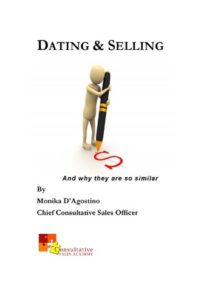In the past years, sales enablement has become an instrumental business practice within organizations. Pretty much every company with more than 500 employees and a sizable sales department has either a Sales Enablement function or a whole department dedicated to that discipline.
How is Sales Enablement defined?
When I googled the term Sales Enablement, the following definition showed:
“Sales enablement is the process of providing the sales organization with the information, content, and tools that help salespeople sell more effectively. The foundation of sales enablement is to provide salespeople with what they need to successfully engage the buyer throughout the buying process.”
or
Sales enablement is the strategic, ongoing process of equipping sales teams with the content, guidance, and training they need to effectively engage buyers. Sales enablement analytics provide marketing and sales teams with data-driven insights to optimize their business and drive revenue.
This is a broad and wide representation and it looks that every organization defines sales enablement differently.
What are the Qualifications for a Sales Enablement job?
While some sales enablement jobs require candidates to provide metrics with qualifications such as “data analysis and strategic recommendations”, others ask for “delivery of learning programs, liaison between Release Management”.
So, basically, sales enablement could be anything that helps salespeople be successful in their roles.
When I conducted a quick survey with my professional network about their view on sales enablement, this is what I received:
- Sales Enablement is all about filling the gap between sales strategies and implementation.
- In the context of solutions and systems / Industry 4.0 / IoT sales enablement means a cultural change:
- Training, Continued Education, and Resources provided to ensure sales reps are more efficient and effective in their sales process
And, what about Marketing?
When I asked the question about the connection between sales enablement and marketing and whether this should be part of the equation, there was silence.
Not that I was surprised, but it gave me food for thought. Why would sales enablement not include a connection to marketing, linking the gap? Most organizations that I have had access to don’t have a function that connects sales and marketing, which leads to what I refer to as a marketing effectiveness void.
What I mean by that is that often marketing works in isolation, communicating updates that are not always conveyed to sales or promoting events, where the sales department is not involved in either the branding, creation or the attendee list.
What is the difference between Sales Enablement and Sales Operations?
When I asked Google (again) between the difference of Sales Enablement and Sales Operations, it showed that “Sales operations will interact with Marketing, but their primary focus is Sales”. I found this especially amusing because none of the Sales Operations jobs I researched required the interaction with marketing.
So, where do we find people who can connect the two?
I’m sure that there are companies that have a successful relationship established between sales and marketing, but usually, those organizations are smaller and the leadership is driven by a founder.
Once companies grow, the gap between sales and marketing seems to grow wider and deeper.
So, here is my pledge. Either, we create a job discipline that acts as the liaison between sales and marketing (creative titles are welcome!), or we could add that responsibility to the sales enablement team.













Comments (1)
This story is really good and educative